Though it was not one of the major historical strategic points, Okayama City 岡山 in the Okayama Prefecture is now one of the most important cities in the Chugoku region of Japan and is now a busy city of over 700,000 people.
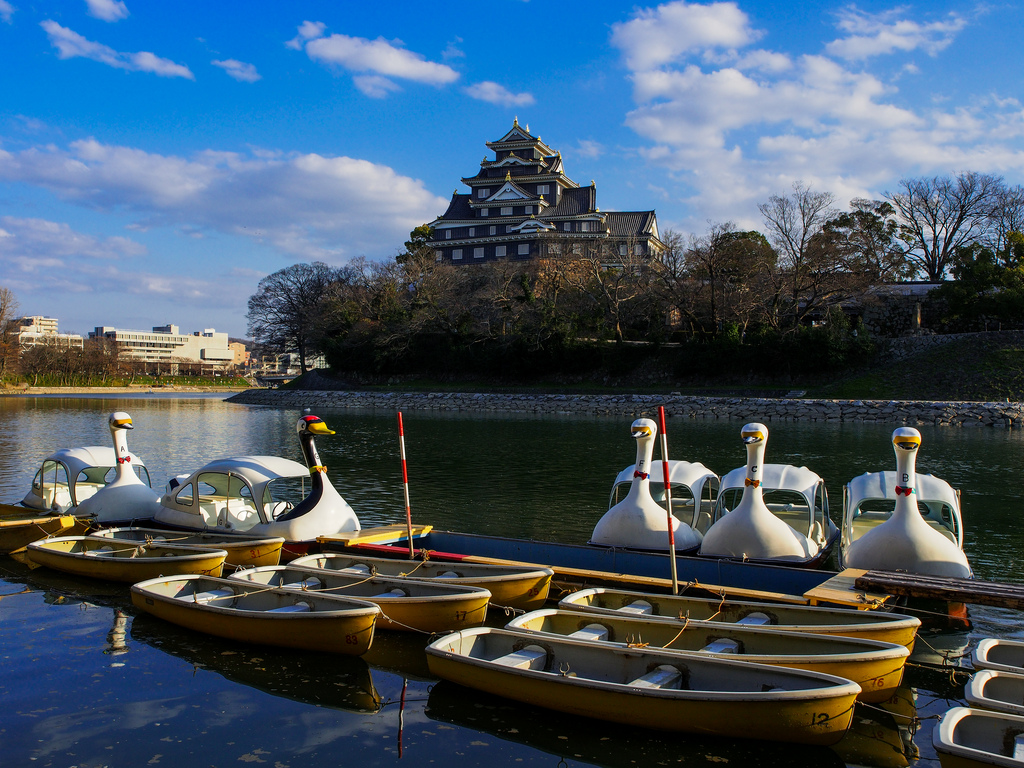
Okayama City
In the past it was an agricultural community. It started to gain prominence when Ukita Naoie rebuilt the small castle in 1597 as his headquarters. Today, Okayama Castle, often referred to as “Black Crow Castle” for the color of its walls, is a major tourist attraction. As well as the castle, the city boasts Korakuen Garden, which is considered one of the three most beautiful in Japan. English is not widely spoken but Okayama locals tend to be extremely friendly and proud of their city and willing to offer help a wayward traveler.
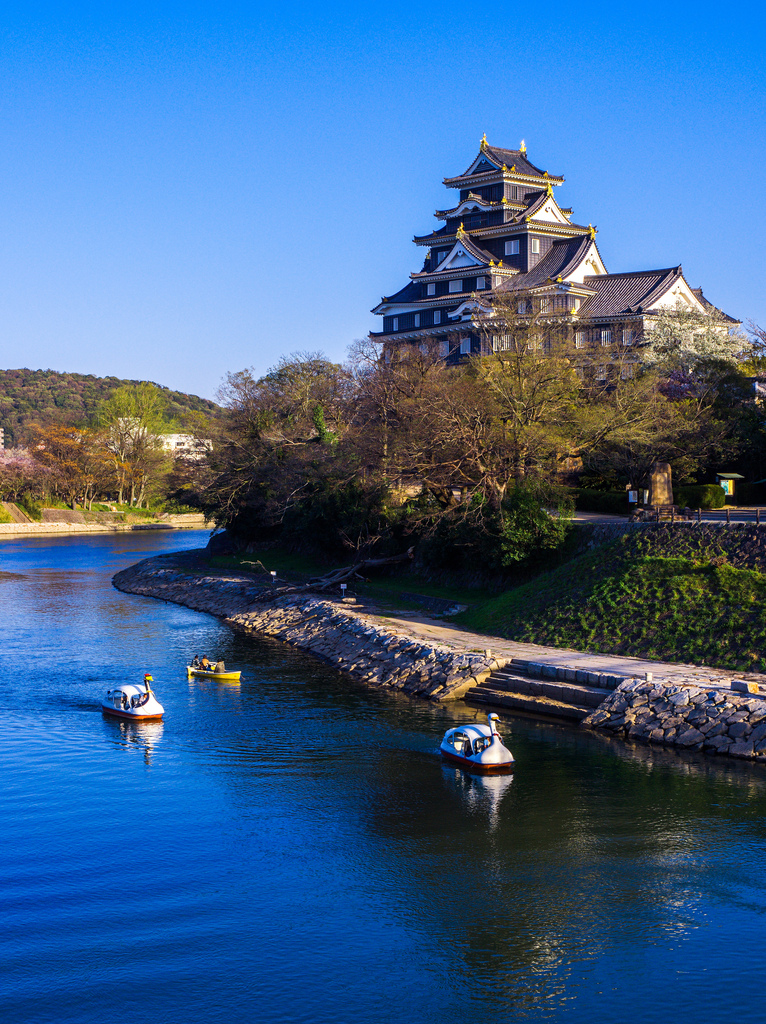
Koraku-en Gardens, Okayama
Okayama city is also the site of the fable “Momotaro,” and many of the stores and regional products reflect this. The area is still famous for its excellent peaches and grapes. Unfortunately most of the city was destroyed in WWII, though it is hard to imagine the extensive damage when you see the thriving city today. Ties to the history remain with things as the main city street named Momotarō-Odōri, in the Peach Boy’s honor!
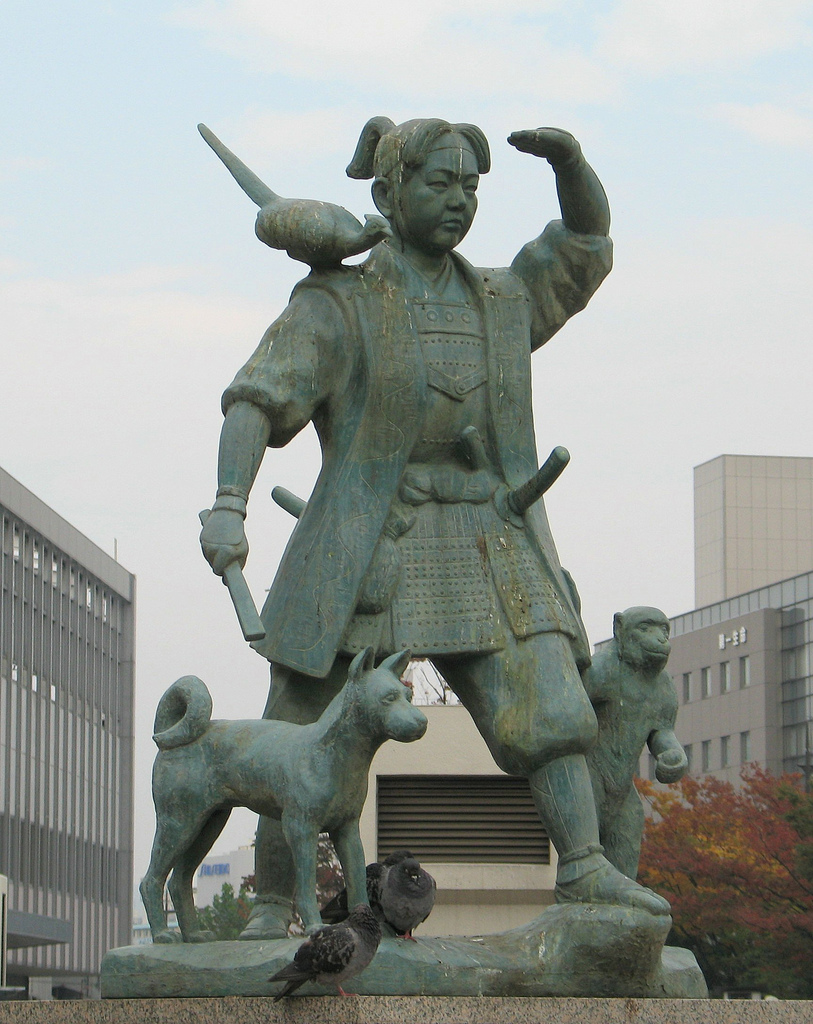
Peach Boy Momotarō-Odōri
Many of central Okayama’s main sights are on the eastern side of the Central Business District in the area known as the Culture Zone. From JR Okayama station, take the tram three stops east to Shiroshita on the Higashiyama Line. All of the sites are within short walking distance from Shiroshita.

Okayama Castle
Notable sites include; the Kōrakuen (後楽園), Okayama Castle (岡山城 Okayama-jō), Okayama Orient Museum (岡山市立オリエント美術館), Okayama Prefectural Museum (岡山県立博物館), Okayama Prefectural Museum of Art (岡山県立美術館), Hayashibara Museum of Art (林原美術館), and Yumeji Art Museum (夢二郷土美術館).

Kōrakuen in Okayama (photo: FullyFunctnlPhil/flickr)
Located in the northeastern part of the city, the Kibiji District has many historical and cultural sites that are associated with the legend of Prince Kibitsuhiko-no-mikoto. The Kibiji District is best visited by bike. The scenic 15 kilometer trail extends from Okayama to Soja and was voted as one of the top 100 cycling paths in Japan. Bike rentals (daily rental cost is ¥1000 per bicycle) are available adjacent to the JR station at Bizen Ichinomiya (upon exiting the station, the rental area is directly to the right).
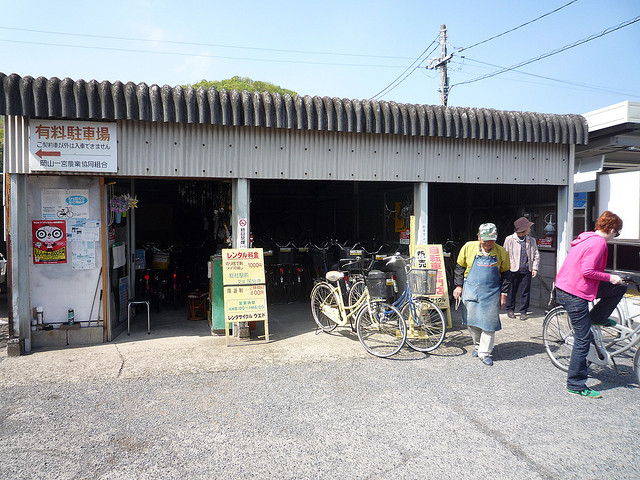
Bizen Ichinomiya in Okayama (photo: frasercgraham/flickr)
To reach Bizen-Ichinomiya from Okayama Station transfer to the ‘Local lines’ section. Signs along the path have “Kibiji District” written on them in Japanese and English and the whole path is well marked. You can return the bicycle at Soja station. Alternatively, all sites can be reached by using the train and then walking or taking a bus.
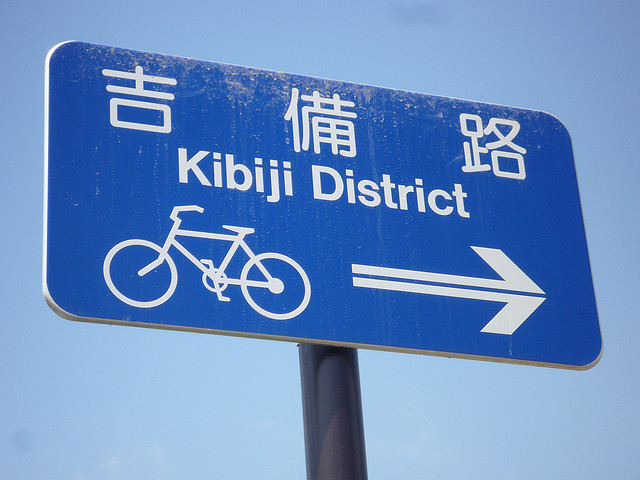
Kibiji District in Okayama (photo: frasercgraham/flickr)
The information office at JR Okayama Station can provide a map of the Kibiji area, including a cycling route that covers the following spots or get a map from the bicycle rental shop:
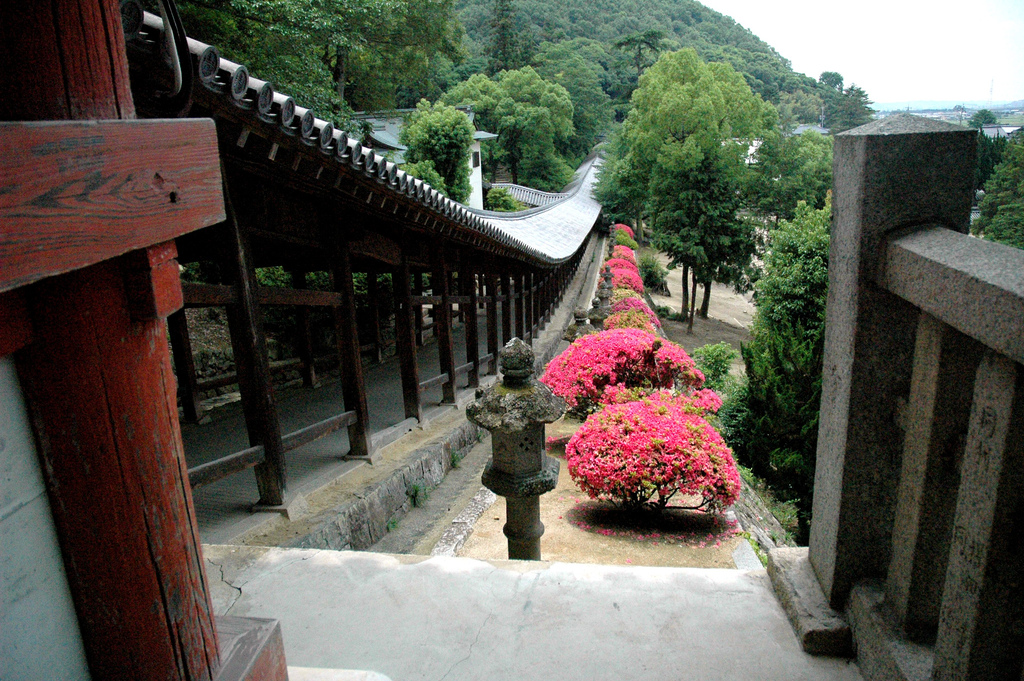
A Long Passage in Kibitsu Shrine
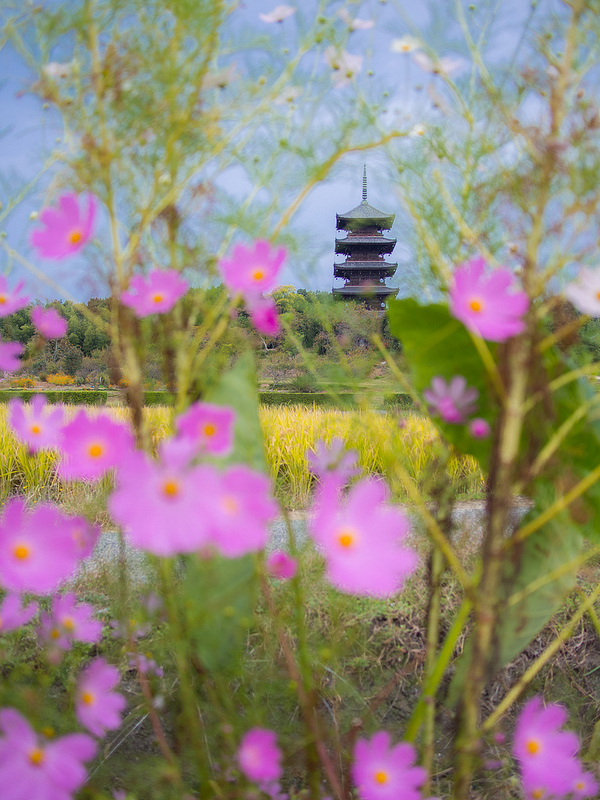
Bitchu Kokubunji in Okayama (photo: PhoTones_TAKUMA/flickr)
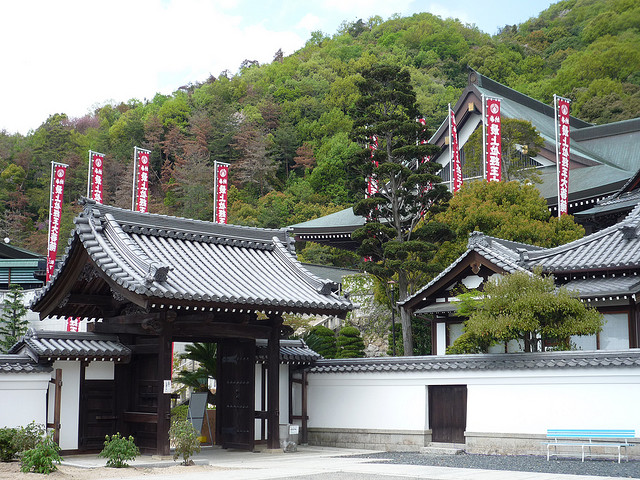
Saijo Inari in Okayama (photo: frasercgraham/flickr)
The following sites are not on the trail but are nearby;
There are lots of other activities and sites to see in Okayama. The Omotecho Shotengai shopping street is a ten minute walk from JR Okayama Station, or 3 tram stops away on the Higashiyama line (departs from Shiroshita Station). It has everything from game arcades and kimono retailers to antique shops and the large Maruzen bookstore. On Omotecho Shotengai as well, the Tenmaya shopping center is a great indoor mall with a large food court.
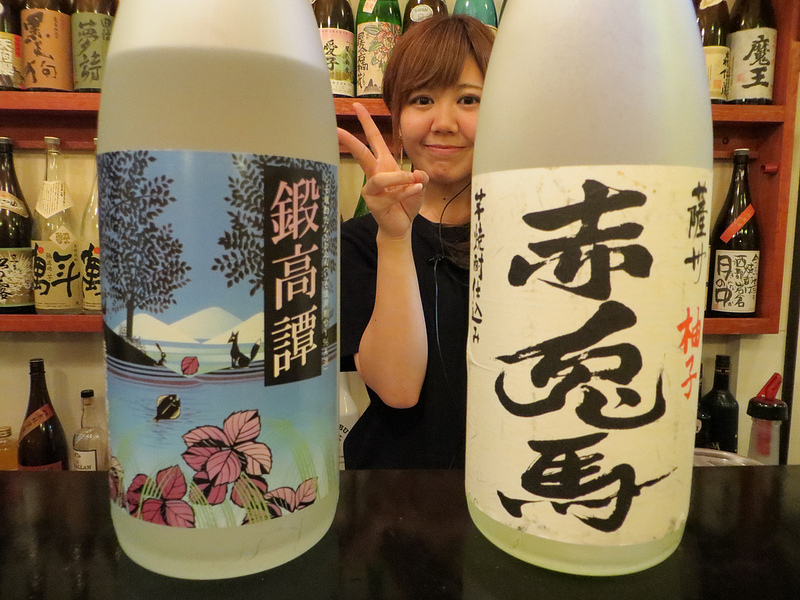
Bengara Izakaya, Okayama – Shiso-flavored Tantakatan shochu from Hokkaido and yuzu-flavored Sekitoba (‘red-rabbit-horse’) shochu from Kagoshima (photo: Joel Abroad/flickr)
One site beer lovers will appreciate is visiting the Kirin Beer Park, 678 Mantomi, Seto-cho, open Tuesday-Sunday from 9:30AM-3:30PM. The Kirin Beer Factory is the only brewery in Western Honshu. Beer-lovers can see how the beer is produced and sample fresh brew for ¥400 per pint. There are shuttle buses from JR Mantomi Station or you can walk from the station in about 15 minutes.
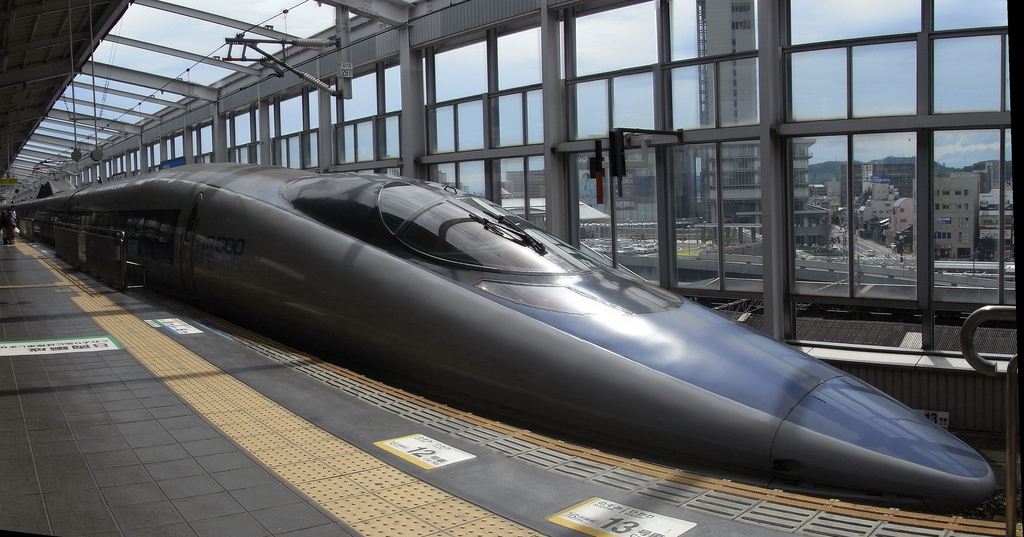
Shinkansen JR500 West at Okayama (photo: yuki_alm_misa/flickr)
It is easy to get to Okayama because the station is now a major stop for the JR Sanyō Shinkansen (山陽新幹線) Nozomi bullet trains. Nozomi trains depart Tokyo at 20 minute intervals, reaching Okayama in about 3.5 hours.
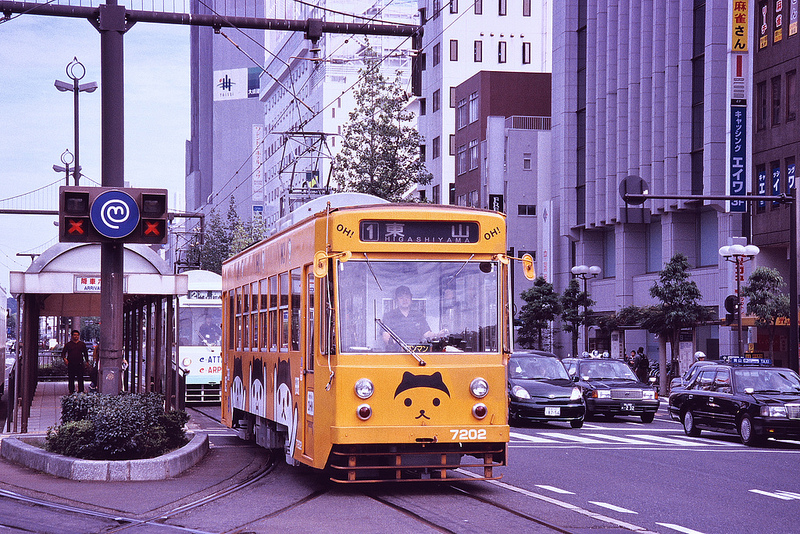
Okayama Tram (photo: HarunaKurita/flickr)
Transportation within Okayama City is by tram, bus or taxi. When you board a tram or bus, board at the rear, take a boarding ticket, and pay your fare (or use a prepaid card) at the front when you get off. Drivers do not give change, but a machine is on the tram that will change coins. If you take a bus, you can buy prepaid bus cards at a variety of locations, including the JR Okayama Station bus information booth and Omotecho Bus Center. While these cards work out to be slightly cheaper than paying cash unused portions of the cards cannot be refunded so for a day trip it is usually more economical just to pay cash.
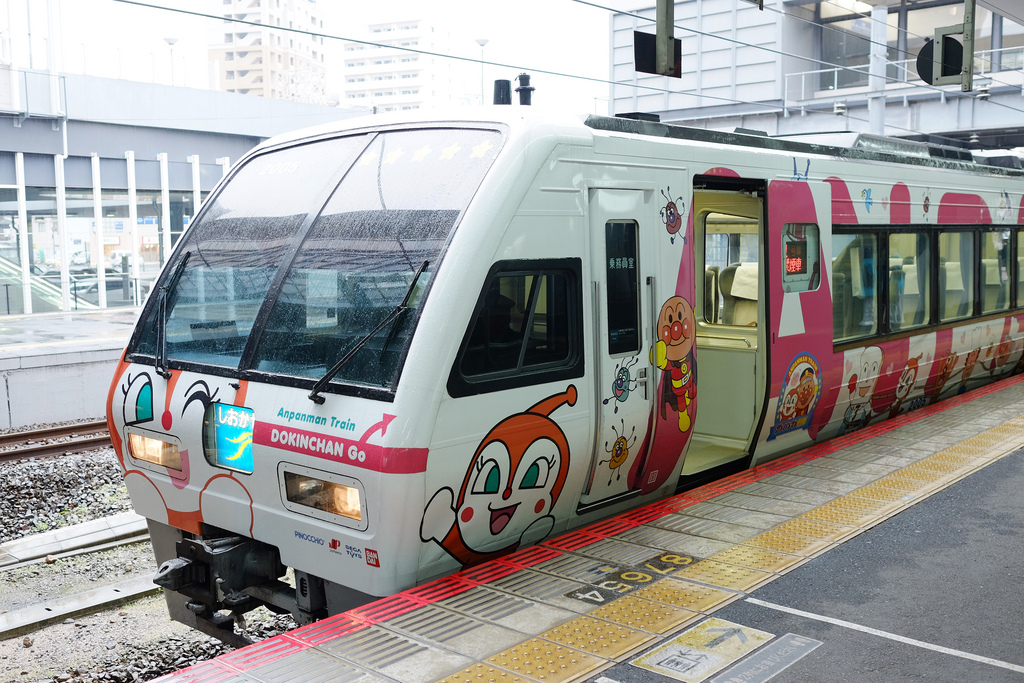
Okayama Anpanman Train (photo: chinnian/flickr)
Two tram lines run from the east side of JR Okayama Station. The Higashiyama line runs along Momotaro-Odori to Okayama Symphony Hall (stopping at “Shiroshita” tram stop, which is the closest stop to Okayama Castle), and then runs towards the prefectural government office before reaching the end. The other line turns to the right about half-way along Momotaro-Odori, passes the central post office, and ends at Seikibashi.
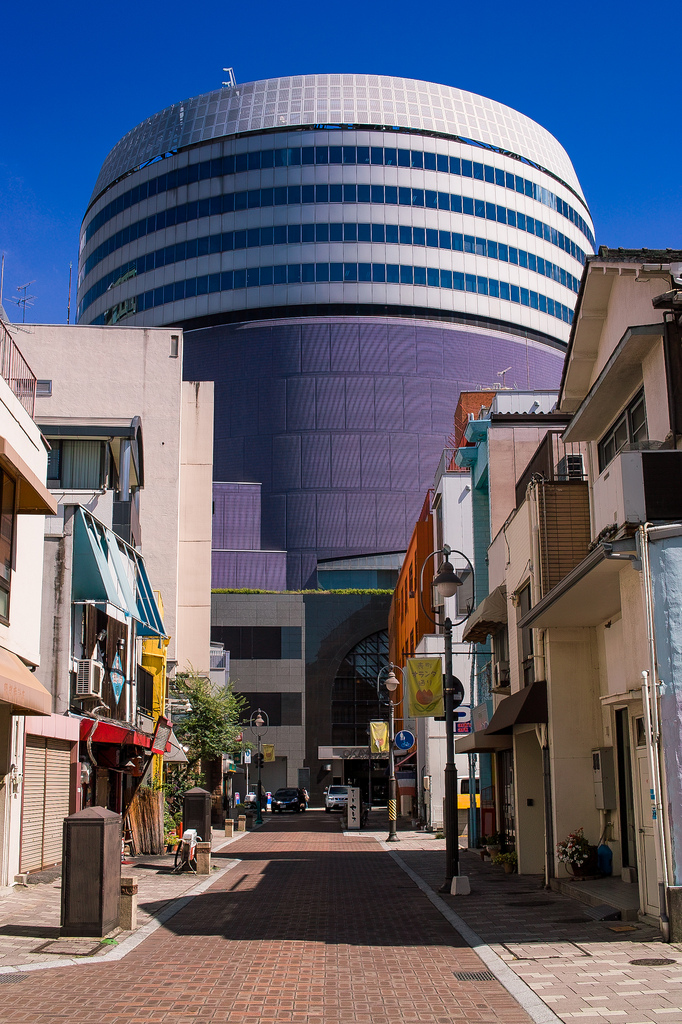
Okayama Symphony Hall
Okayama is a good place to launch day-trips to most of Chugoku and Shikoku regions as it is the central transportation hub. Within Okayama prefecture you will find:
With all there is to see and do, why not use it as a springboard for a trip to Shikoku or Kyushu?
 photos by:
PhoTones_TAKUMA &
linuts,
barto,
PhoTones_TAKUMA,
Yuki Yaginuma,
PhoTones_TAKUMA
photos by:
PhoTones_TAKUMA &
linuts,
barto,
PhoTones_TAKUMA,
Yuki Yaginuma,
PhoTones_TAKUMA